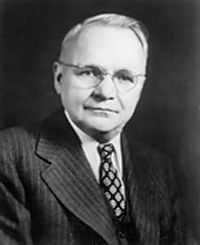It’s a good week to celebrate math and science.
As the world celebrates a new batch of Nobel Laureates – a seriously impressive group advancing physics and chemistry and medicine – we thought we’d take a closer look at a thinker who made a major impact on modern telecoms.
 Say hello to Harry Nyquist. His theorem, which you might also know as the “Sampling Theorem,” is still used today to digitize analog signals, nearly 100 years after Nyquist was an engineer at Bell Laboratories.
Say hello to Harry Nyquist. His theorem, which you might also know as the “Sampling Theorem,” is still used today to digitize analog signals, nearly 100 years after Nyquist was an engineer at Bell Laboratories.
Let’s start there: what is the Nyquist Theorem and why does it still matter?
In a nutshell, the phone lines you know and love were built using copper wires. Instead of building a connection between every single home, which would be crazy, those wires connected neighborhoods to a central office that facilitated calling between telephones in all the buildings linked to that central office.
An analog signal carried the human voice along those copper wires from one home into another. (Fun fact: for many, this is still how voice transmission works to this day.)
Fast forward a few decades and the need arose to turn those analog signals into a series of ones and zeroes. It was time for digital.
Why? Switching to digital increased the transmission capacity of networks. And it allowed companies to transition to digital switching systems for routing telephone calls.
With the advent of AT&T's T-carrier digital transmission system in 1962, it was now possible to transmit 24 calls simultaneously over a single copper wire - twice as much as good old analog.
Thanks to the work of Harry Nyquist, there was a solution. Years prior, Nyquist had done purely theoretical work on determining bandwidth requirements for transmitting information. He determined that the number of pulses that could be put through a telegraph channel was limited to twice the bandwidth of the channel. (We'll explain that more in a second.)
This theorem was the key to digitizing the analog signal. Using this, it was possible to turn the human voice into a series of ones and zeroes.
To explain Nyquist's theorem a bit more: in its most basic form, Nyquist’s work states that an analog signal waveform can be converted into digital by sampling the analog signal at equal time intervals.
The sampling rate must be “equal to, or greater than, twice the highest frequency component in the analog signal.” (If you’re all about seeing math in action, you can take a closer look at what this means here.)
Nyquist’s work states that an analog signal waveform can be converted into digital by sampling the analog signal at equal time intervals.
Even today as we digitize analog signals, Nyquist's theorem is used to get the job done.
Here’s to the science that keeps us connected.

